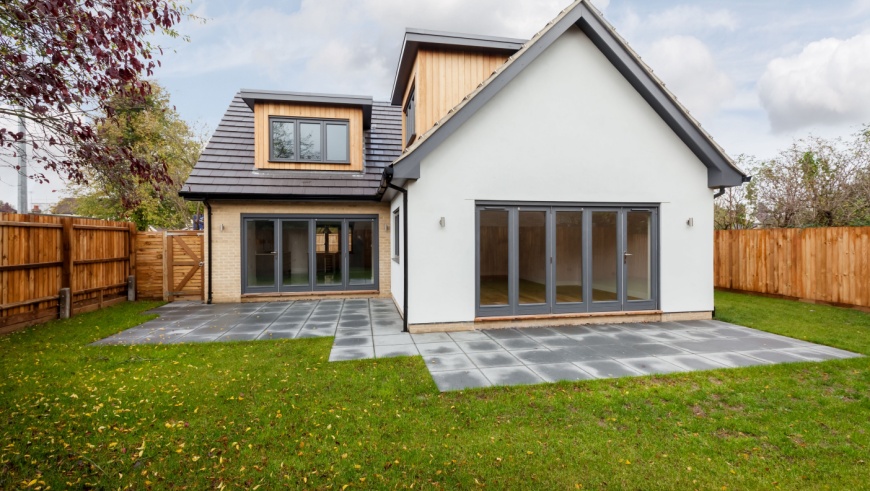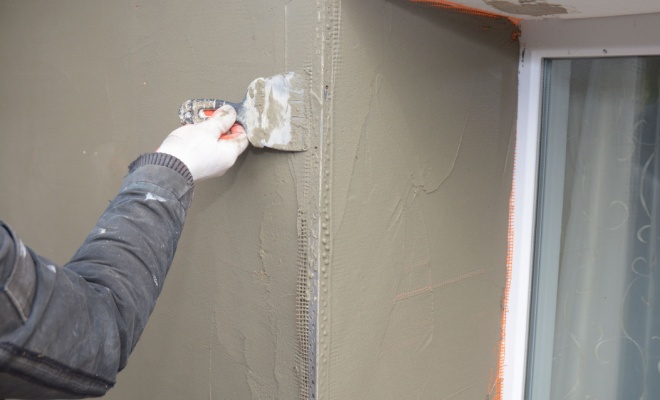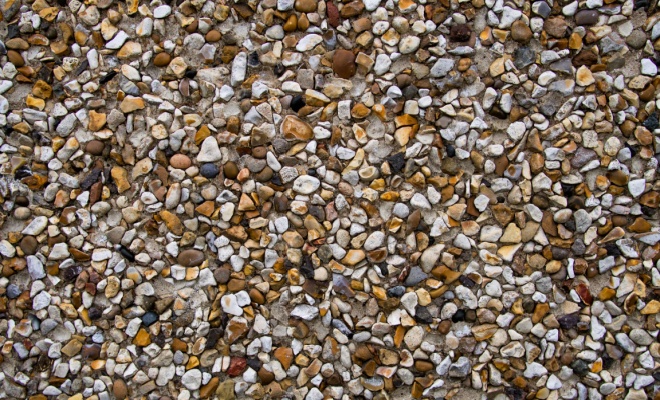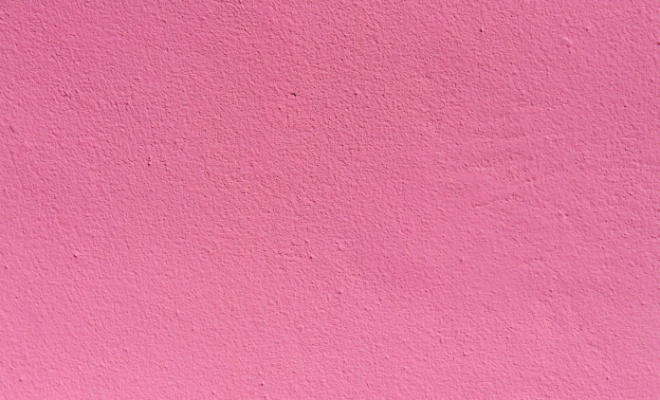House Rendering Cost
Last updated 29th August, 2025
Wondering about the cost of rendering a house?
In this guide, we unveil the complete rendering cost calculator UK, answering questions like "How much does rendering cost?" (for instance, for a 3-bedroom semi, expect around £3,000 to £4,000). We cover the rendering cost for houses of all sizes and types, including k rendering and cement render.
Keep reading to explore more about house rendering cost!

How Much Does Rendering Cost?
To scaffold a typical 3-bedroom semi-detached house, remove all the existing render, prep the surface (keying, stabilizing, brushing, etc), and apply two layers of smooth render will cost around £3,000 to £4,000.
What else do I need to consider?
A quote for rendering prices will not usually include painting — so you'll need to consider this when budgeting for this project (if it's something you want done). Exterior painting costs can be anywhere between £200 and £2,000.
For a pebbledash finish, add on around an extra £1,000, plus if you want the pebbledash render painted, add on an additional £1,000, as painting pebbledash is not an easy or quick task, and requires a brush which needs to be pressed into the render to get good paint coverage.
Most renderers charge per job rather than per day as there will be a lot of days waiting for the different stages to finish drying.
For a 3-bed semi-detached property, a full rendering job usually takes around a week to complete.
Table of Contents
House Rendering Prices
Here are a few average costs for hiring someone to render the external walls of a property:
| House Type | Finish Type | Avg. Cost | Duration |
|---|---|---|---|
| Semi-detached Bungalow | Smooth | £2,500 | 3 - 6 days |
| Detached Bungalow | Smooth | £3,000 | 4 - 7 days |
| Terraced House | Smooth | £3,500 | 4 - 7 days |
| Semi-detached House | Smooth | £4,000 | 5 - 8 days |
| Detached House | Smooth | £4,500 | 7 - 10 days |
| Semi-detached Bungalow | Pebble-Dash | £2,500 | 4 - 7 days |
| Detached Bungalow | Pebble-Dash | £4,000 | 5 - 8 days |
| Terraced House | Pebble-Dash | £4,750 | 5 - 8 days |
| Semi-detached House | Pebble-Dash | £5,500 | 6 - 9 days |
| Detached House | Pebble-Dash | £6,500 | 8 - 12 days |
Rendering Cost Per M²
As every house is different, it's useful to look at exterior rendering pricing in another way.
The full house rendering cost will depend on how many square metres the exterior of your property is. As a rough guide, these are some typical sizes:
- Average UK house - 100m²
- 2 to 3 bed house - 80m²
- 3 to 4 bed house - 120m²
Using the average UK home of 100m² and the average rendering cost per m², we can estimate how much smooth and pebble-dash external rendering will cost.
The typical render cost per m² for a smooth render is around £35 to £50. For a pebble-dash finish, the average rendering cost per m² is around £40 to £70.
As well as the two different styles of exterior rendering, the total cost is affected by other factors such as the size of your home. Larger properties with more square metres to render will necessarily cost more in terms of material and labour.
Pebble-dash rendering comes with a higher price tag per m² because it requires extra materials (pebbles and stones) and takes longer to apply. However, the extra rendering cost may be offset by increased durability in the long term.
Rendering Cost Breakdown Calculator
Individual costs for hiring a rendering company to fully render a 3-bed semi-detached house with a smooth finish - Total Cost: £4,000
Materials
£2,000
Tradesmen
£1,200
Scaffolding
£800
What Does External Rendering Involve?
There are different types of house rendering materials available, but they all provide an external finish for your property.
While home rendering was originally a sand and cement mix designed to cover up and waterproof old bricks, it is now a popular choice as an alternative wall finish.
Before rendering takes place, you'll need to check whether the brickwork is in good condition. If it isn't, you should have the brickwork repointed and replace any damaged bricks. On average, repointing brickwork costs around £25 to £50 per square metre.
You should also check thoroughly for damp prior to starting work. Damp course costs can range from £280 to £2,000, but failing to get this work done could lead to your new render being damaged over time.
The process of rendering your home will usually include:
- Erecting scaffolding to access the walls.
- Removing any existing render.
- Keying the brickwork.
- Applying 2 coats of render.
After rendering, masonry paint is often applied to help keep out moisture. However, most tradesmen will not include this in their house rendering quote, so be sure to budget for this separately.
You should bear in mind that a breathable render will often fail when covered with impermeable masonry paint. You should always check the product instructions and warnings before arranging for any external paint to be applied over your render.

As house rendering requires full access to the exterior walls, any roofline or wall products such as guttering, soffits, fascias, alarm boxes, and satellite dishes may need to be removed prior to the work taking place.
This can be a good time to replace any roofline products that may be past their best. For example, the typical soffits and fascias replacement cost is between £1,000 and £1,750.
Types of External Rendering
There are different ways of rendering a house depending on which materials you choose. There are pros and cons to them, and some may not be suitable for external rendering on your home.
Here are some common material options for rendering a house:
Cement Render
A cement render is a popular option for those on a strict budget, as the materials outlay is cheaper than many other options.
However, while the costs of rendering materials in this instance are cheap, you'll need to factor in extra labour costs. This is because cement house rendering often requires multiple coats and so takes more time to apply than some other options.
Pros
- ✔ Cheaper option
- ✔ Can provide a smooth or textured finish
- ✔ Durable
Cons
- ✖ Requires regular maintenance
- ✖ Likely to crack over time
- ✖ More coats mean more labour expenses
Monocouche Render
A monocouche render is generally a low-maintenance rendering option that still looks good when finished.
Since it only requires a single coat and the colour is already mixed in, monocouche is a more cost-effective method of rendering a house than cement. With lower labour costs and no need for painting afterwards, monocouche is increasingly popular.
The upfront costs for monocouche are more expensive, though, so that might be off-putting for some.
Pros
- ✔ Hard-wearing
- ✔ Colour comes mixed in
- ✔ Sleek and smooth finish
Cons
- ✖ More expensive option
- ✖ Doesn't usually need multiple coats unless you choose a scratch finish
- ✖ May still crack over time
Lime Render
Lime render is typically used for older properties or homes where damp is a problem.
It's a breathable and flexible rendering option, meaning that any moisture can escape from the property instead of building up inside and creating damp or mould issues.
As the name suggests, this type of external rendering is made from lime, and it's mixed with sand to create the render. It's usually recommended that a professional apply lime render to your home, as it can be a tricky process for a DIY job.
Pros
- ✔ Breathable
- ✔ Less likely to crack
- ✔ Attractive finish
Cons
- ✖ More difficult to apply
- ✖ Needs regular care
- ✖ More expensive
Silicone Render
Silicone is one of the more popular house render choices for modern homes.
It is a flexible exterior rendering option with water-repellent properties. Thanks to its low maintenance needs, homeowners won't need to worry too much about regular care as they would with lime render.
However, the silicone render cost is generally higher than other materials, and it's best practice to get this type of rendering installed by a professional to ensure the coverage is correct.
Pros
- ✔ Long-lasting
- ✔ Doesn't require much maintenance
- ✔ Water-repellent
Cons
- ✖ Expensive option
- ✖ Needs to be professionally installed
- ✖ Colour can fade
Planning Permission for External Rendering
You should always check locally for home rendering planning rules, as these can vary across the UK.
However, it's unlikely you will require planning permission for rendering the external walls of a house, unless the property is located within a conservation area or is a listed building.
Building Regulations are more likely to apply to house rendering as they control structural issues, plus fire safety and thermal performance. These may be affected by your rendering work, especially if you're adding any insulation during the process.
If in doubt, seek advice from your local authority rather than fall foul of the rules.
Cladding vs Render vs Roughcast and Pebbledash
Cladding is a skin of any material added to a building for protection and/or decoration.
Many different materials are used as cladding, with a lot of manmade modern materials such as uPVC as well as a growing number of special timber claddings that require very little maintenance too.
Typical house cladding costs range from £1,650 to £7,500, depending on the size of your home and what style of cladding you choose.
One variation is timber cladding, which is especially popular on modern builds. The average cost of timber house cladding will be between £2,400 and £6,500.
Render does the same job as cladding, but while most types of cladding materials are dry and mechanically fixed to the property using screws or fittings, render is a wet coat applied to the exterior, much like plaster.
Roughcast and pebbledash are essentially render reinforced with pebbles, gravel, or shells, to create a hardwearing outer layer over the property.
This is seen most often on exposed coastal homes as they stand up to the elements. It was very popular on local authority housing in the 70s and 80s, as it was cheap to apply and maintain, but it is less popular today, perhaps because it seems old-fashioned.
The cost to pebbledash a house is based primarily on the size of your property. Prices range from £2,500 to £8,000.

When it comes to protecting your exterior walls, your choices will be dictated by budget and surrounding houses, or sometimes by what your local council will approve! The required maintenance is a big issue too, low-maintenance options tend to be more extensive to apply, but you save on upkeep over time.
Traditional rendering is one of the cheaper options to install, costing from around £60 per square metre, though uPVC cladding is cheaper still at £50 per square metre. Natural stone cladding comes in at around £100 per square metre, whereas artificial stone is much cheaper at £70 per square metre.
Hardwood timber cladding is around £90 per square metre, but the cheapest, but much less durable option, is masonry weatherproof paint, which costs around £15 applied for 3 coats.
Coloured External Render
Coloured render is a decorative alternative that remains practical. There is a vast range of coloured renders available to suit your home and almost any taste. Choosing a colour is fairly easy as most companies offer colour charts and even tester pots so it's just like choosing paint.
Most modern coloured renders will require a base coat of primer before the actual coloured render can be applied to smooth out the external wall. These base coats often use a fibreglass mesh embedded within them to bond with the render. A render primer will also be required which will match the colour of the render itself. Then the coloured render itself can be applied.
There are a number of different types of coloured render to choose from, including silicone, acrylic, mineral and monocouche scratch render. Silicone render is the premium coloured render available in hundreds of colours and it repels water, dirt and organic growth like moss or lichen. Silicone render is also easy and quick to apply as it comes ready to use straight out of the bucket.

Acrylic render is similar to silicone except it doesn’t have quite the same hydrophobic properties to repel water, but it’s just as flexible as silicon and holds onto the colour pigment well.
Mineral render is a dry-mix, thin coat render which is great to use in rainy climates like the UK, as it is extremely fast drying. Other renders may not be best applied in cold/rainy temperatures because they take too long to dry, but mineral render is fine as long as you paint it afterwards with silicone paint to seal it in.
Monocouche scratch render is a thick coat coloured render which needs to be applied in two coats (unlike standard one-coat monocouche) and, like silicone, may not be suitable for application in wet or humid conditions.
Always check the product datasheet to understand how house rendering should be applied.





